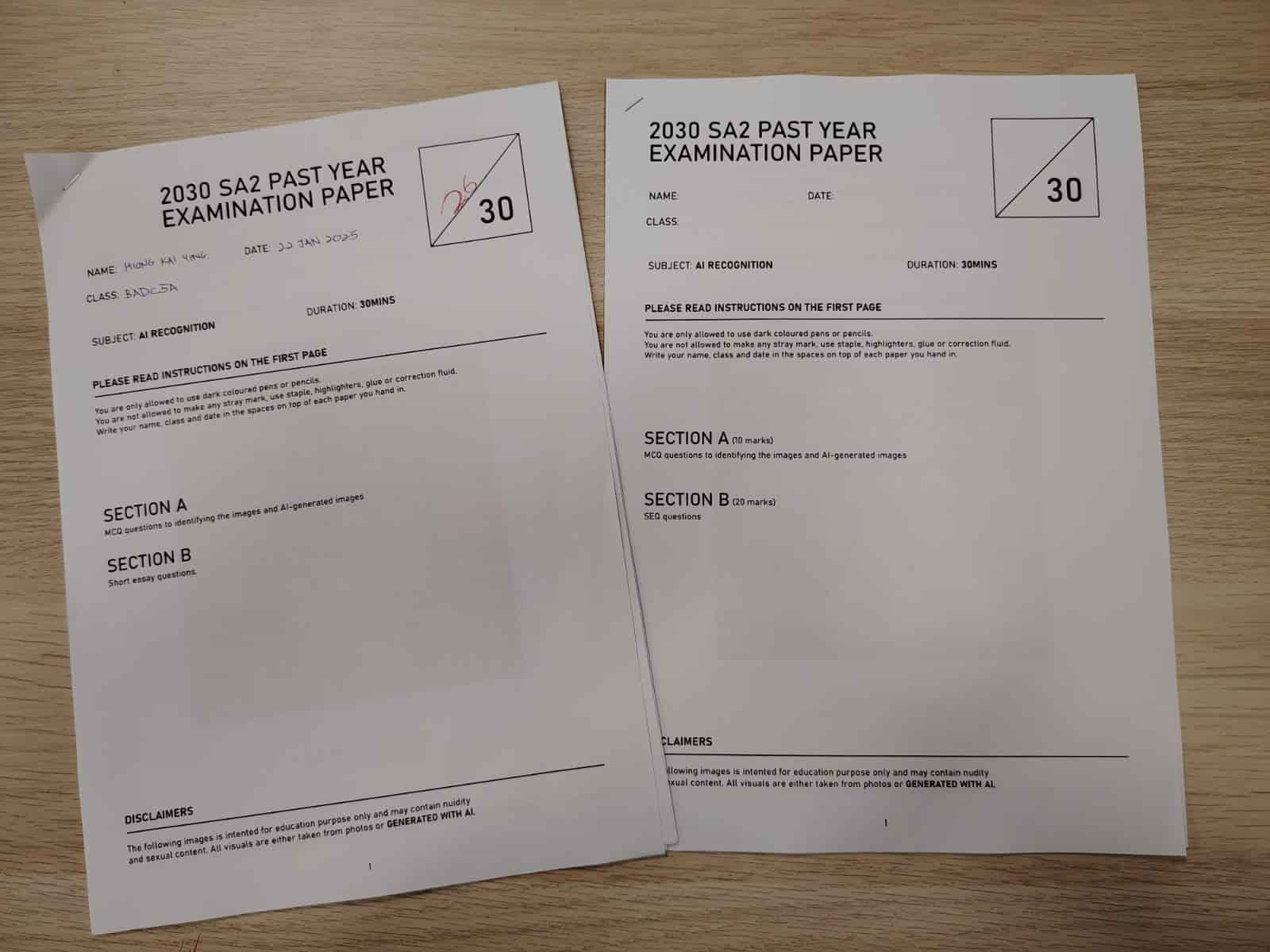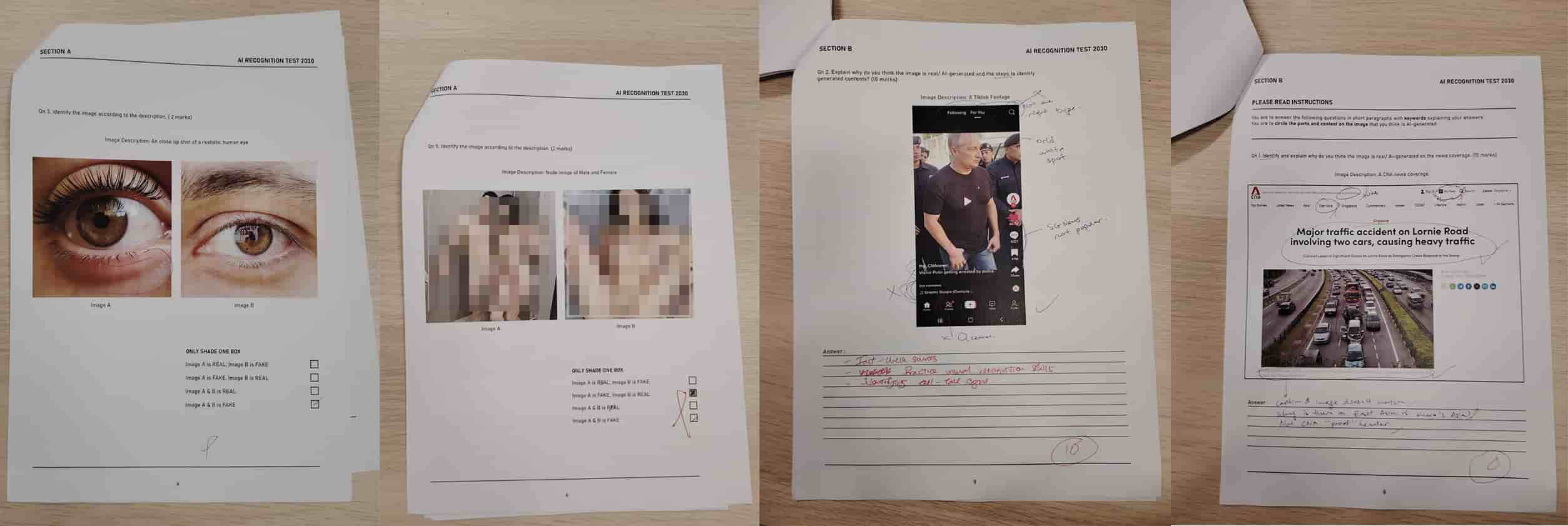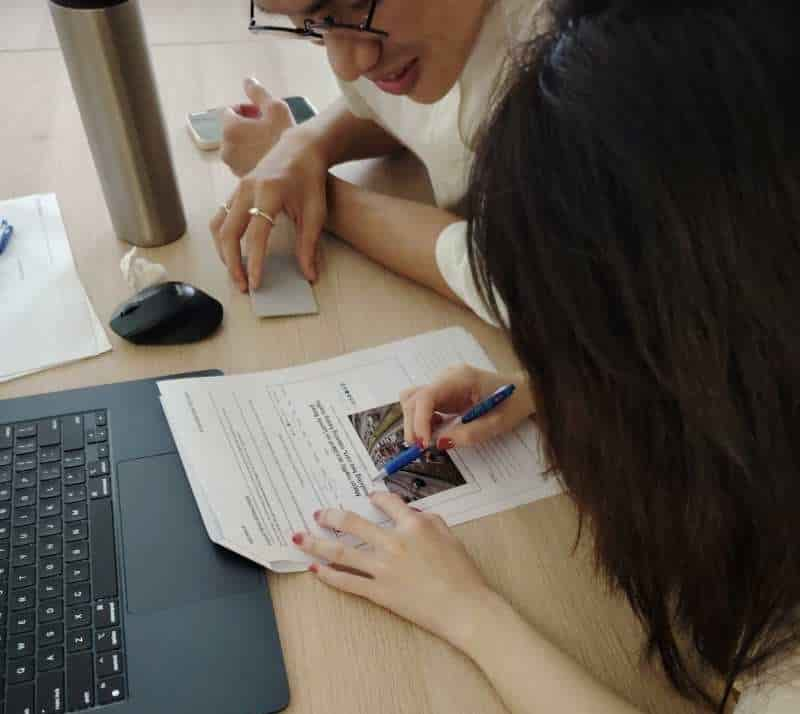FLOATING THOUGHTS
As I was researching and crafting new narratives, I was thinking how in such a blurred era, where do you get reliable informations, how are informations being relayed through mediums? Which led me to thinking how people were to rely newspaper for news. However, in the recent artefact that was created by Near Future Labotary was a AI-future newspaper, consisting of news relating to integration with AI which was very similiar to what I was trying to achieve.
SURVEY RESPONSES
With the Google form published on the different channels of Reddit, I was able to quickly gather a number of responses within a span of 3 days. Eventhough some of the responses to short answer question were left blank, I was able to get the responses that were of priority. However, I was reccommended to increase the number of survey respondent, therefore I left the form open till the end of week.
2030 AI-IDENTIFICATION EXAM PAPER
The 2030 AI-Identification Exam Paper is a speculative exam paper that tests the ability of a human to distinguish between real and generated images. Using the same image generation method that was used for the previous publication, I came up with clearer instructions to how the test will be conducted. The treatment to the exam paper was the same as the papers that were set for the typical Primary & Secondary school setting.
The intention of the exam paper was not to just test the ability of human to distinguish between real and generated images, but to raise awareness on the issue of generated content associated with personal data. The image generation method will be the same and the way the questions are being displayed will be of an increasing difficulty level. The exam paper will consist of both MCQ and SEQ questions. The following images contain the responses from the user testing which was held later.
As I proceed with the user testing with 2 of my classmates and through the observations, it was interesting to see the participants struggling to identify the real images and making assumptions to the images. However I do realise that images like the CNA news and Tiktok video contains other elements in the image that starts to distract them when taking the test. The feedback was fun and engaging, however I've yet to identify the result from this prototype if it answers the research objective. The question also includes whether it sparks discussion about the issue. Maybe a question could be included after their participation to see if the participants brought back something(e.g AI knowledge, Identidfying tips) with them?
The general observation was that people are able to distinguish the images from the MCQ questions, but fail to do so when identifying the text generated to title of the news. The way the participant observe are only towards the images rather than paying attention to the other information displayed to them. They are able to identify the generated contents but fail to list the steps and practice taken to identify generated contents. However, more particpants will be required to get a better insight and data to compare.
DISCUSSION & FEEDBACK
On the meetup with my lecturer, we had a discussion on what I could do to improve the prototype. It was mentioned how this could be carried out as an workshop for people to engage in to learn more about AI-generated content. However, at this point it lacks in the design factor and by that it meant how as a designer myself can offer this knowledge about AI-generated in my own point. As compared to psychologist who is specialise in their topic, what can I do differently through the lens of design.


